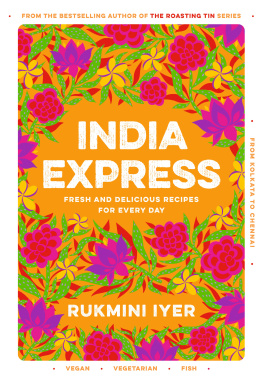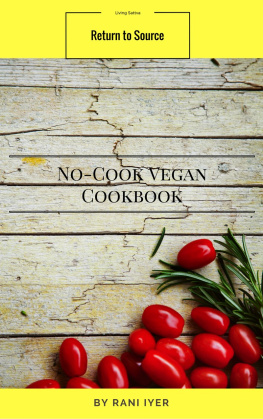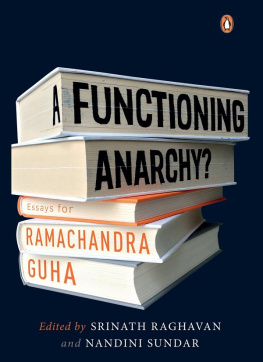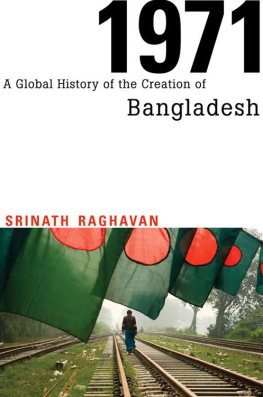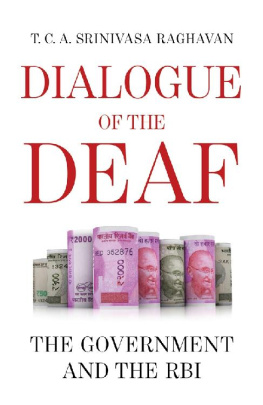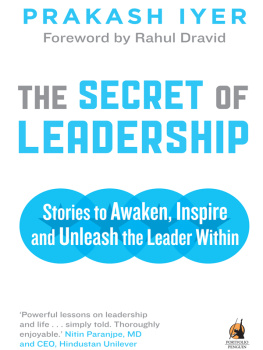Raghavan Iyer - On the Curry Trail
Here you can read online Raghavan Iyer - On the Curry Trail full text of the book (entire story) in english for free. Download pdf and epub, get meaning, cover and reviews about this ebook. year: 2023, publisher: Workman Publishing Company, genre: Home and family. Description of the work, (preface) as well as reviews are available. Best literature library LitArk.com created for fans of good reading and offers a wide selection of genres:
Romance novel
Science fiction
Adventure
Detective
Science
History
Home and family
Prose
Art
Politics
Computer
Non-fiction
Religion
Business
Children
Humor
Choose a favorite category and find really read worthwhile books. Enjoy immersion in the world of imagination, feel the emotions of the characters or learn something new for yourself, make an fascinating discovery.

- Book:On the Curry Trail
- Author:
- Publisher:Workman Publishing Company
- Genre:
- Year:2023
- Rating:5 / 5
- Favourites:Add to favourites
- Your mark:
- 100
- 1
- 2
- 3
- 4
- 5
On the Curry Trail: summary, description and annotation
We offer to read an annotation, description, summary or preface (depends on what the author of the book "On the Curry Trail" wrote himself). If you haven't found the necessary information about the book — write in the comments, we will try to find it.
On the Curry Trail — read online for free the complete book (whole text) full work
Below is the text of the book, divided by pages. System saving the place of the last page read, allows you to conveniently read the book "On the Curry Trail" online for free, without having to search again every time where you left off. Put a bookmark, and you can go to the page where you finished reading at any time.
Font size:
Interval:
Bookmark:
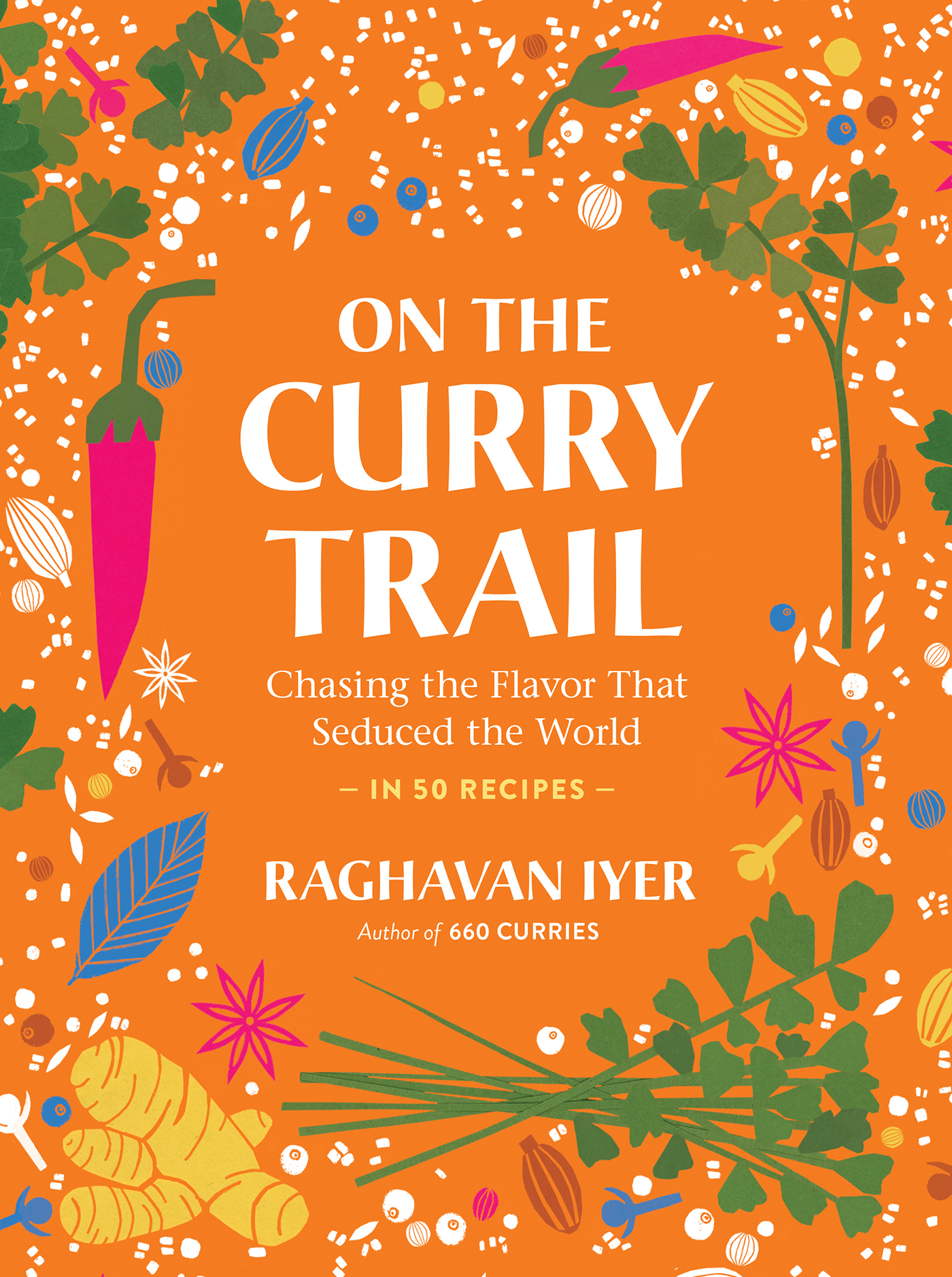
Curry
Trail
Chasing the Flavor That Seduced the World
in 50 recipes
Raghavan Iyer
Workman Publishing
New York
To my partner of more than thirty-eight years, Terry Erickson.
You have been a steadfast presence in my life through sickness and in health and without you, this book could never have been penned.

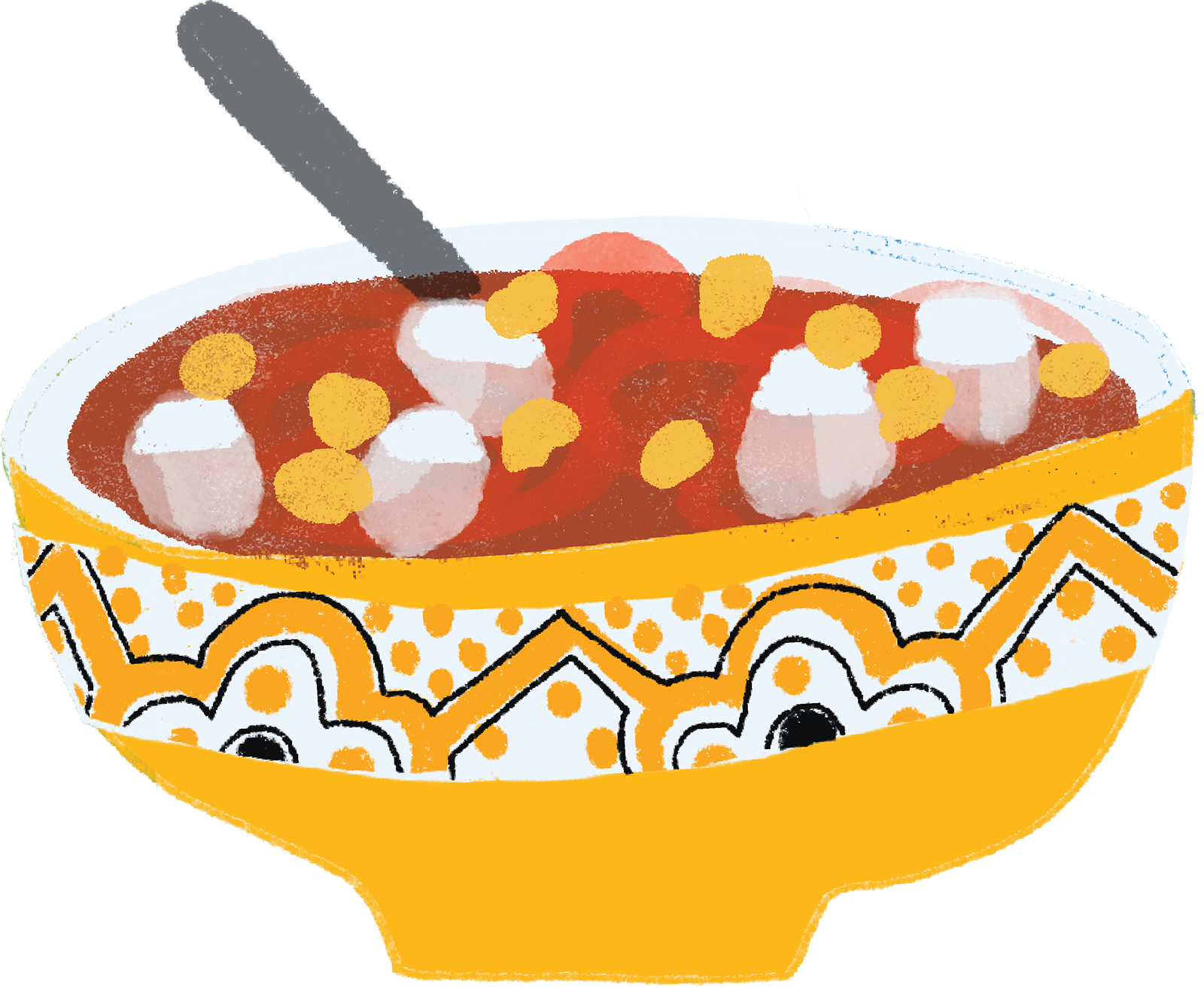
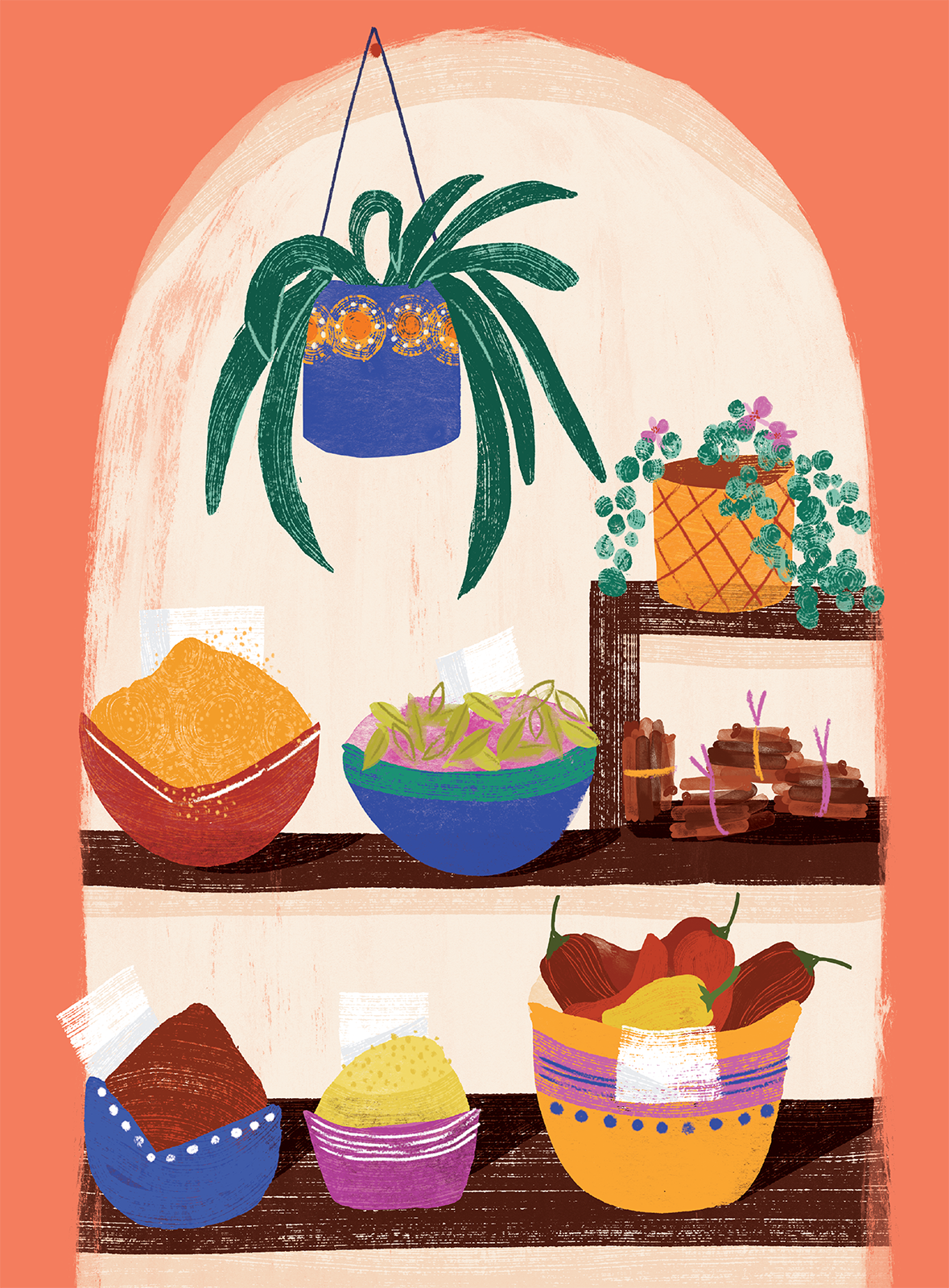
In 2008, I authored a book called 660 Curries that captured the essence of a curry as seen through the eyes of cooks and their eaters within the Indian subcontinent (including Pakistan, Sri Lanka, and Nepal). These saucy dishes anchored their position at the table, at every meal, evidence of their existence dating back to India (and Pakistan) around 4000 BCE, along the Indus River, and flourishing with the sophisticated Indus civilization of Mohenjo-Daro and Harappa between 2500 and 1600 BCE. Mortars and pestles pounded spices like saffron, sesame seeds, mustard seeds, cumin, tamarind, turmeric, ginger, garlic, and peppercorns, flavoring dishes that included meats, fish, wild game, barley, wheat, rice, peas, lentils, chickpeas, and even fruits like pomegranate, dates, and bananas.
The sophistication of Indian cuisine, balancing six taste elements of hot, sour, sweet, bitter, salty, and astringent (umami was a much later discovery), is deeply embedded in the annals of ayurvedic medicine, from around the first century BCE, a science that dictated the role of spices, herbs, and other flavorings to regulate various body types for a sense of equilibrium. Temperature contrasts, colors, aromas, and textures were under consideration as well, as practitioners of ayurveda combined seemingly disparate ingredients with highly nuanced results, balancing the therapeutic qualities inherent in food. Every dish had a specific spicing technique, every stew and sauce a particular name. The word curry was nonexistent in any of the languages spoken in India for thousands of years until the British set deep colonial roots in this subcontinent.
If any dish deserves to be called global,it is curry. FromNewfoundland tothe Antarctic, fromBeijing to Warsaw,there is scarcely aplace where curries are not enjoyed.
COLLEEN TAYLOR SEN,CURRY: A GLOBAL HISTORY
This book, The Curry Trail, follows the journey and the influence of the colonials and the Indian diaspora itself to comprehend the introduction and acceptance of curries, in all their forms, including curry powders and pastes, around the globe. To understand the presence of the British and the subsequent concept of curry powders, it is best to follow the spice trail (and particularly the path of the peppercorn) to and from India. Indias geographic location has long placed it at the crossroads of international trade routes, and the spices, which for many years grew only on its land and that of its neighbors, made India more than just a convenient stopping point. They made it a destination.
Even though spices and other goods were being traded via land routes during theNeolithic period (which began around 10,000 BCE), it is the emergence of viable sea routes that catapulted the spice business from the East to the European West (spanning almost 10,000 miles) and forged a conduit for the maritime silk route. The Austronesians (those cultures and countries comprising people speaking Austronesian languages from Taiwan, Madagascar, Oceania, and the seafaring parts of Southeast Asia) were early builders of oceangoing ships and established maritime spice routes that included southern India and Ceylon (now Sri Lanka) as early as 1500 BCE, eventually reaching Africa and the Arabian Peninsula. Indians were already trading peppercorns with the Middle East (by land) around 2000 BCE; they experienced a boom in the spice trade with the Arabs and Phoenicians 800 years later when the rulers from East India controlled cloves and cinnamon from Sri Lanka and the Moluccas (now Indonesia).
First we had Mulligatawny soup,
Which made us all perspire,
For the cook, that obstinate nincompoop,
Had flavoured it hot as fire.
Next a tremendous fragmentary dish
Of salmon was carried in,
The taste was rather of oil than fish,
With a palpable touch of tin.
Then, when the salmon was swept away,
Wed a duckey stew, with peas,
And the principal feature of that entree,
Was its circumambient grease.
Then came the pride of my small farm-yard,
A magnificent Michaelmas goose:
Heavens! his breast was a trifle hard;
As for his leg, the deuce!
Last, wed a curry of ancient fowl:
In terror a portion I took,
Hot?I could hardly suppress a howl
Curse that fiend of a cook.
The Police-Wallahs Little Dinner, 1871
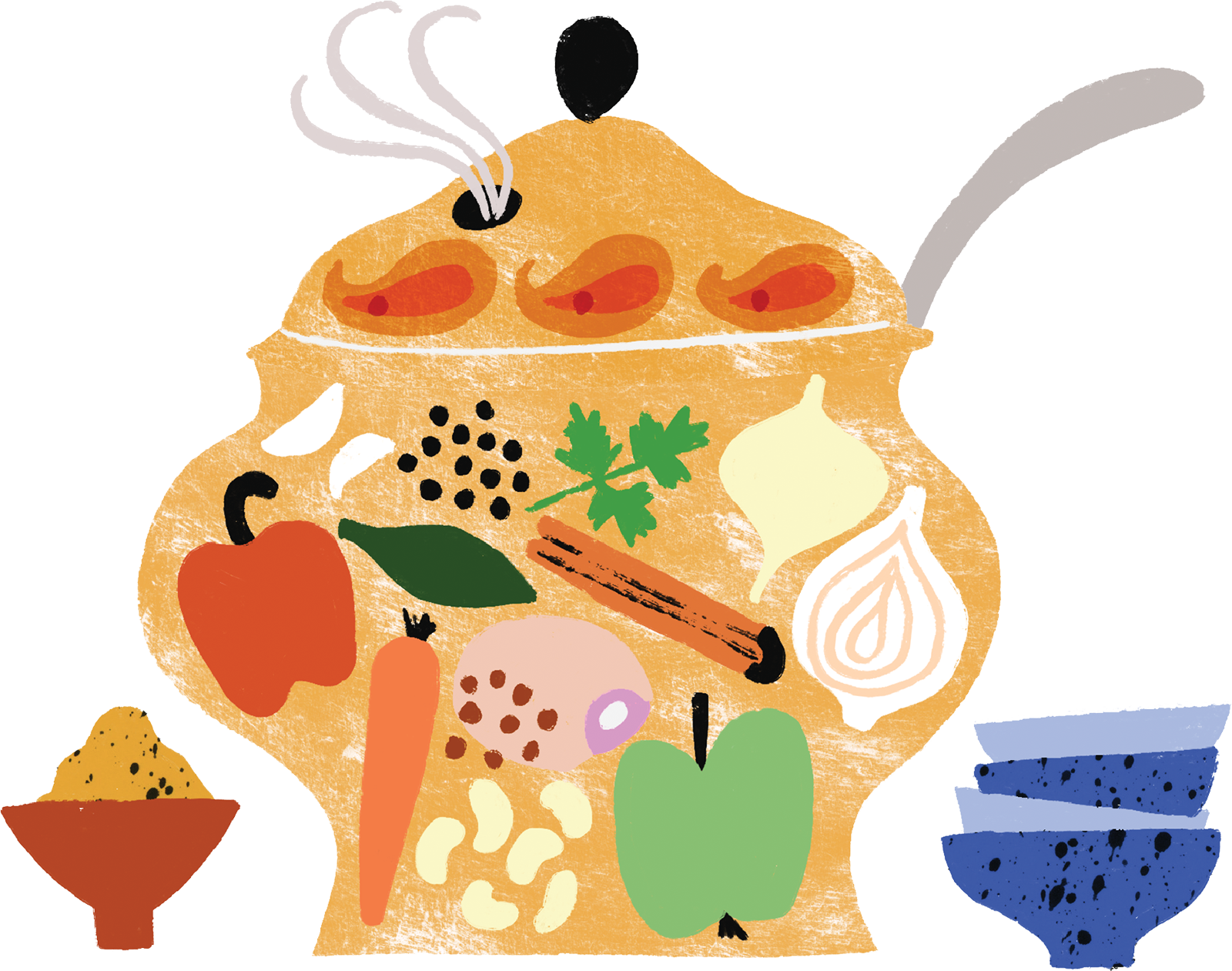
A Fragrant Journey
Curry has crisscrossed the globe, setting roots in kitchens from Australia to Antarctica. Yes, you read that correctly. There may be no recipe for penguin curry in this book thankfully, since penguins are protected but there is evidence suggesting curries made their way onto the menu for members of certain expeditions as early as 1902.
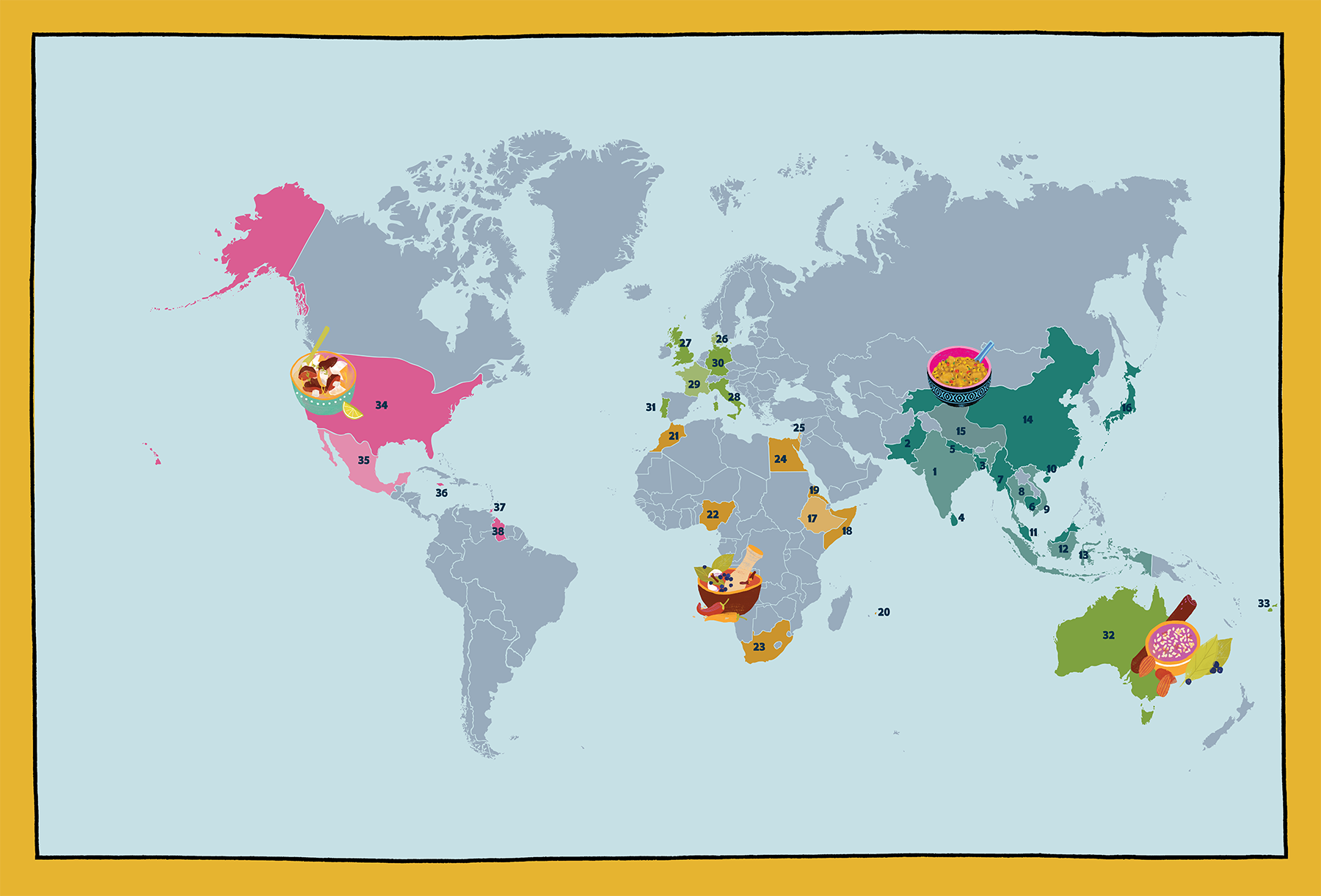
India (pp. )
Pakistan (p. )
Bangladesh (p. )
Sri Lanka (p. )
Nepal (p. )
Cambodia (p. )
Myanmar (p. )
Thailand (p. )
Vietnam (p. )
Hong Kong (p. )
Malaysia (pp. )
Borneo (p. )
Indonesia (p. )
China (p. )
Tibet (p. )
Japan (p. )
Ethiopia (pp. )
Somalia (p. )
Eritrea (pp. )
Mauritius (p. )
Morocco (p. )
Nigeria (p. )
South Africa (p. )
Egypt (p. )
Israel (p. )
Denmark (p. )
United Kingdom (pp. )
Italy (p. )
France (p. )
Germany (p. )
Portugal (p. )
Australia (p. )
Fiji (p. )
United States (pp. )
Mexico (p. )
Jamaica (p. )
Trinidad and Tobago (pp. )
Guyana (p. )

The native Piper nigrum vine wrapped around other plants, usually coffee. Its green fruit, when poached in boiling water and dried in the sun, shriveled to become what we know as black peppercorns, bursting with the seduction of a slow burn on the tongue. Thats what took traders, rulers, warriors, marauders, preachers, and refugees to southwestern India off the coast of Malabar (now called Kerala) in droves starting around 500 BCE to procure massive amounts of this beguiling spice, which was often referred to as black gold. Indian traders were supplying ginger, black pepper, cardamom, and cinnamon to the Romans via the Arabs until the Romans, by the first century BCE, figured out a way to cut out the middleman and get to India by ship to procure spices directly, using the flow of monsoon winds across the Indian Ocean.
Next pageFont size:
Interval:
Bookmark:
Similar books «On the Curry Trail»
Look at similar books to On the Curry Trail. We have selected literature similar in name and meaning in the hope of providing readers with more options to find new, interesting, not yet read works.
Discussion, reviews of the book On the Curry Trail and just readers' own opinions. Leave your comments, write what you think about the work, its meaning or the main characters. Specify what exactly you liked and what you didn't like, and why you think so.

